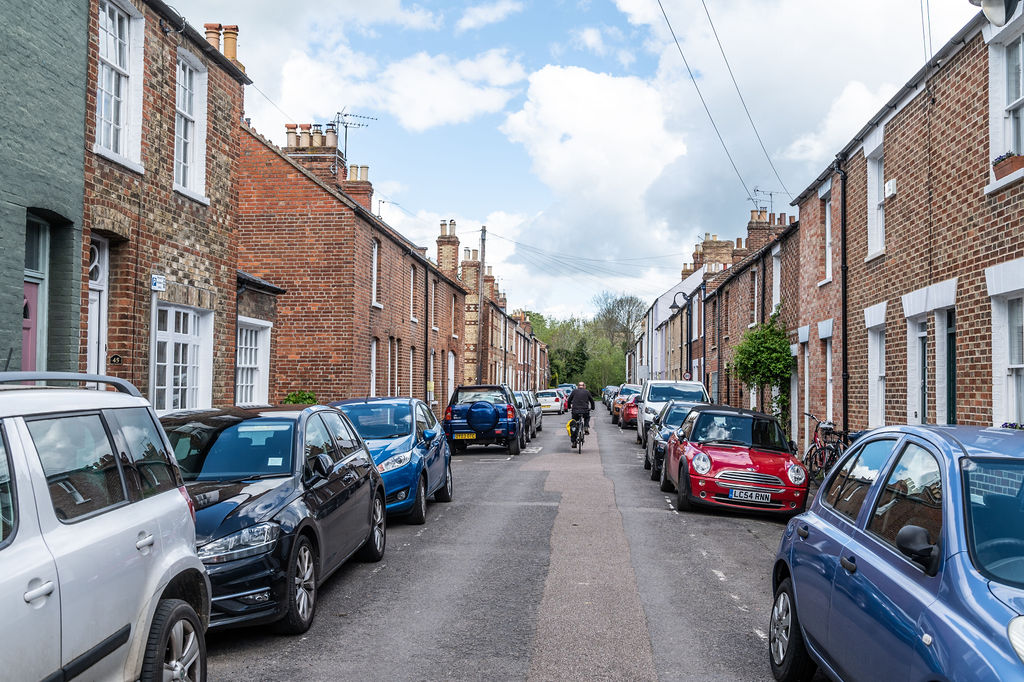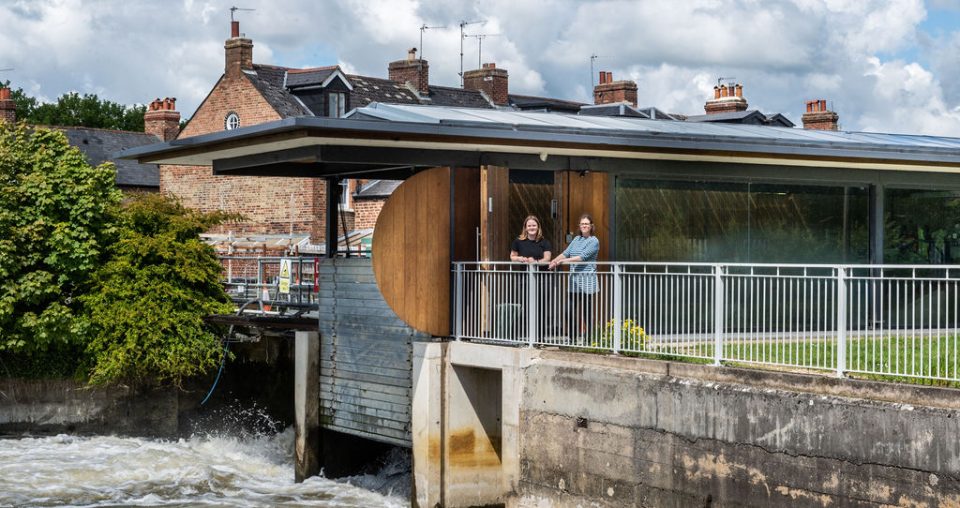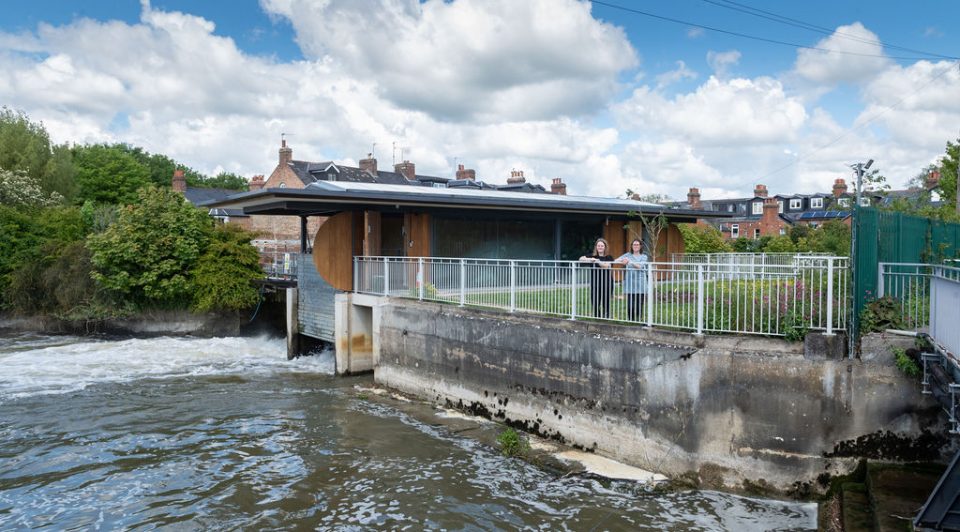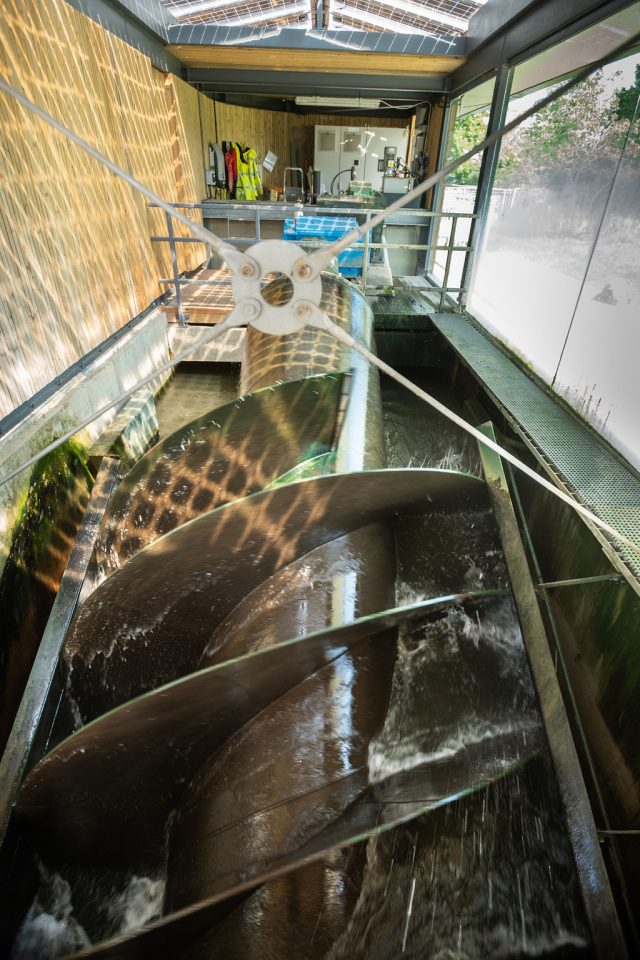- Case studies
- Osney Island Smart and Fair Neighbourhood Trial

Osney Supercharge
Osney Island’s Smart and Fair Neighbourhood Trial
The Osney Supercharge trial formed part of Project LEO’s Smart Fair Neighbourhood (SFN) projects. These were six sets of local trials that explored how Smart Community Energy Scheme (SCES) business models can sit at the heart of a smart, low-carbon, locally balanced energy system, creating opportunities and benefits in an equitable and fair way for everyone.
What were the Osney Supercharge trials testing?
Project LEO recruited a group of households and businesses on Osney Island to take part in the trial and agree to generate and store their own electricity, sharing their data with us. We wanted to explore how homes and businesses could share energy and flexibility for the benefit of all within the island community.
The trials aimed to examine the opportunity for and benefits of, solar PV generation combined with battery storage, hydro generation and electric vehicle charging within the Osney electricity system.
During the trial period, there was a good uptake of the Low Carbon Hub offer to pay for the solar panels and battery over 20 years, with the homeowner charged for any of the electricity generated and/or stored that they use, at a discount of 10% based on what they would pay on their other, regular tariff from their energy supplier (after 20 years the panels and battery will belong to the homeowner). Nine buildings had solar panels installed and four had batteries.
The trials then looked at pooling the energy generation, storage and usage data from participating households with generation data from the community hydro and solar array to give us an overall picture of this community’s ability to generate and store energy locally to meet its needs (removing reliance on the grid).

In particular, we wanted to examine how the demand for energy consumption can be met in different ways through a flexible combination of hydro and solar generation with battery storage to help meet the peaks in demand, minimising the amount of power we need to draw from the wider grid at peak times.
At the outset of the trials, it was clear that open access to data and smart technologies would be needed to balance supply and demand over time. The Osney Island trial enabled us to see how this could work on a local scale by creating a personal and community energy dashboard for this secondary substation area using People’s Power Station 2. 0.
We also wanted to evaluate the potential of the renewable electricity generated by the local hydro scheme in providing flexibility including powering the electric vehicle fleet at the Environment Agency (who have their depot on Osney).
Why Osney Island?
Osney Island is a riverside community in west Oxford of around 300 densely developed Victorian terraces and modern flats. One of the reasons we chose Osney for this trial was that it is home to a community-owned 50kW hydro generation scheme, with an associated 9kW solar installation and these energy-generating assets have been key to our trials. Osney also has a single secondary substation that the whole island and a community that is already highly engaged with generating and storing electricity.
What did we ask participants to do?
Unlike some other SFN trials, we did not ask participants to adjust their energy usage, but they had to consent to have their usage and generation monitored over the period of the trial and the results fed into the specially developed dashboard on the People’s Power Station 2.0.
The dashboard displayed all participant’s energy data in one place as well as that of the community hydro and battery, giving a unique overall view of the generation, usage and storage of the community.
We held workshops with participants in the trial to look at the data the dashboard has generated and help them to understand how their participation is a vital part of the bigger picture for Osney. We were encouraged by the enthusiasm of the participants and during the session, we looked at a number of scenarios to demonstrate how their energy use and generation are being monitored.
In particular, we have been looking at how the demand for energy consumption can be met in different ways through a flexible combination of hydro and solar generation with battery storage to help meet the peaks in demand, minimising the amount of power we need to draw from the wider grid.
Who was involved?
We worked with Osney Community Energy and Osney Lock Hydro to incorporate the community energy assets into the trial and Low Carbon Hub provided Project Management services as well as the offer for battery and solar installation assistance for households.
Baringa supplied battery and PV modelling, with PowerVault as the battery supplier.
On the data management side, a strategic partnership with Fractal Networks enabled dashboard development and Hildebrand provided CAD devices.
Oxford City Council provided planning advice and liaison on EV charging and parking infrastructure, and SSEN gave local energy system advice, including monitoring and mapping.
Local homeowners and businesses played a key role in generating and storing their own energy and participating in the trials to share their data.
What barriers did we encounter?
During the trials, we encountered several barriers to participation or technologies used and these provided useful insights for future development of smart community energy systems. For example;
- In some Osney properties, there was not sufficient space for the current type of PowerVault batteries, reducing the number of installations.
- It was also complicated for individuals to access their own energy data due to the number of ways and steps involved.
- SSEN’s connections team raised concerns that there might be voltage rise issues that would prevent them from allowing so many householders to connect their solar panel systems to the grid.
What did we learn?
The trial at Osney offered invaluable insights (albeit at a small scale) demonstrating how a community can create and manage its energy use, storage and generation locally and at a household level, enabling us to minimise the need for supply from the grid.
At Osney, SSEN have developed a more detailed energy system model than is available anywhere else in their network, based on additional network monitoring and modelling at the low-voltage level. They are now applying the learnings to the rest of the business.
The trials were also important to discover how communicating with households through digital dashboards can help them understand their role in the development of a smart energy community scheme, the benefits this delivers and how every household within the community can participate.
Helping to balance the required energy import to Osney Island is as much about managing when households and businesses consume electricity and avoiding periods of drawing on the grid at times of high carbon intensity, as it is about maximising the total amount of local renewable energy. So even if some homes are unable to install their own solar panels or have no space to instal a battery they can still participate actively by optimising when they use electricity matching it to when there is the greatest local generation.
Moreover, SSEN’s detailed modelling will allow us to work back from net zero scenarios for the island so we can establish the network infrastructure required for net zero. This could enable Osney Island to be the first secondary substation area in the UK to have a network upgrade plan that works back from a Local Area Energy Plan (LAEP), rather than working forward in incremental steps to avoid acute network constraints.
Despite initial voltage concerns, SSEN confirmed that the level of solar panel and battery installations planned for this SFN could go ahead without causing these voltage issues and in fact, it proved to help balance that part of the grid.
What’s next?
The overall vision for communities like Osney is to create a decentralised local energy system where local clean energy generation from renewable sources is able to match local demand, where a community is working collectively to manage the generation and use of energy to benefit households, businesses, and the local network and help reach our net-zero goals.
The results we have seen at Osney are providing vital insights into how our energy system can work more flexibly and by bringing all these elements together, we can map out how Smart Local Energy Systems can be created.

